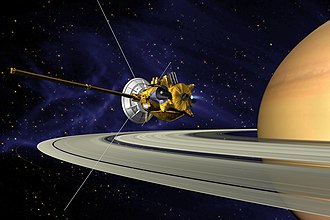Cassini–Huygens
Gematria Values
The Cassini spacecraft, also known as the Cassini-Huygens mission, was a collaborative effort between NASA, ESA (European Space Agency), and the Italian Space Agency (ASI) to study the planet Saturn and its moons. Launched on October 15, 1997, the spacecraft entered Saturn's orbit on July 1, 2004, and conducted a comprehensive study of the Saturnian system until its intentional deorbitation on September 15, 2017. The mission's primary goals included investigating the composition and behavior of Saturn's atmosphere, rings, and magnetosphere, as well as studying its diverse array of moons, particularly Titan and Enceladus. The Cassini spacecraft carried a suite of advanced scientific instruments, including cameras, spectrometers, and radar systems, which provided unprecedented data and images of the Saturnian system. The mission's findings have significantly enhanced our understanding of the outer planets and their moons, revealing intricate details about their geological activity, potential habitability, and complex interactions within the Saturnian system. In Hebrew, the spacecraft is referred to as גשושית קאסיני. In French, it is known as Sonde Cassini, and in Spanish, it is called Sonda Cassini.
Wikipedia Information
